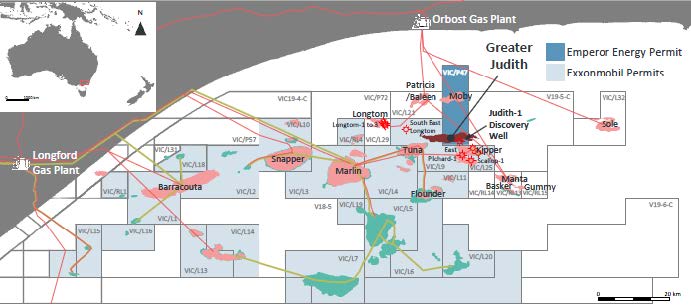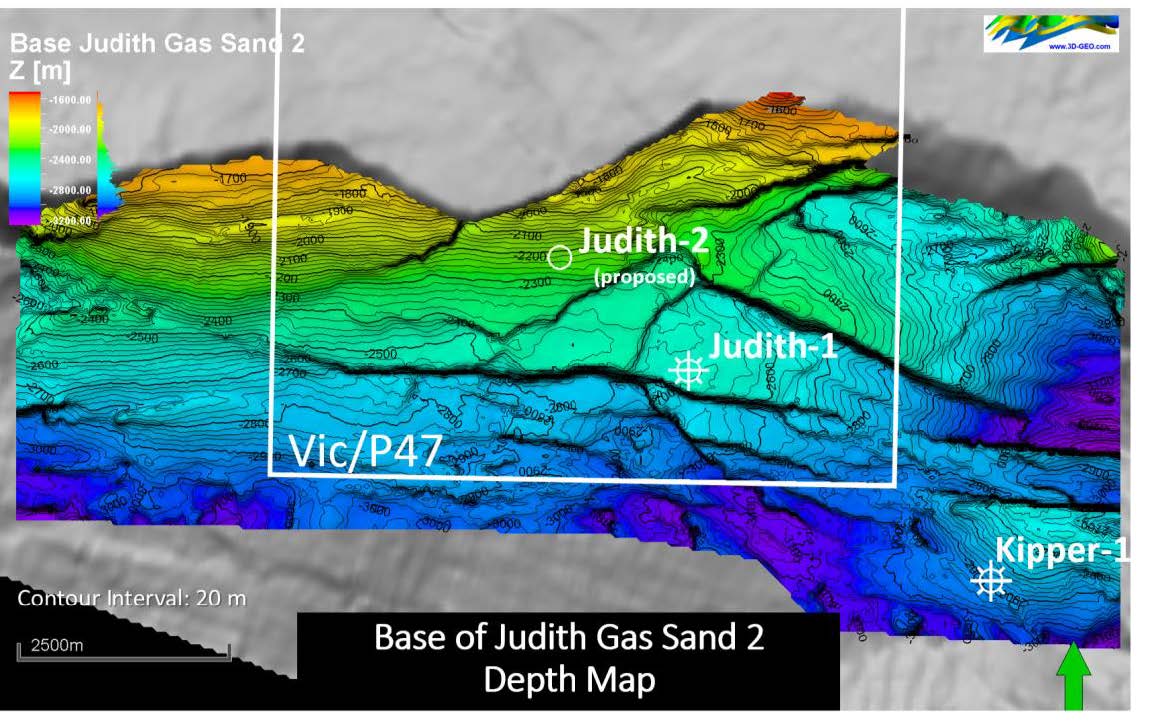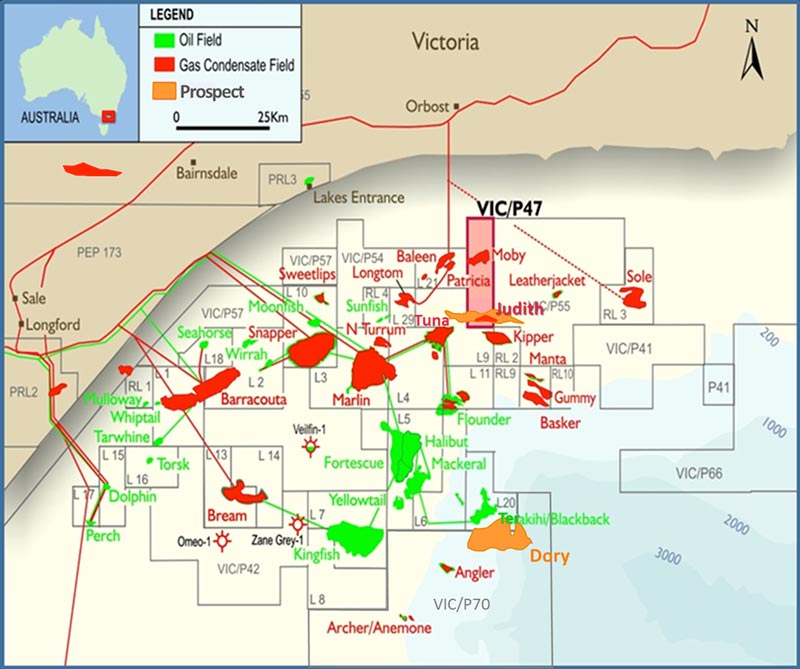Emperor Energy has announced positive initial 3D Seismic Data results from its 100% owned Judith Gas Field in the offshore Gippsland Basin.
The Sydney-based explorer said its team of consulting geologists and geophysicists were currently doing analysis of the multi-client 3D seismic data acquired in the VIC/P47 Permit in mid-2020 by CGG. This follows an independent resource statement completed on 11 July 2019.
The data was accessed by Emperor Energy in April this year and after an initial phase of technical work, revised analysis of the structure is ongoing to develop new structural mapping and a 3-dimensional view of each gas bearing reservoir sand penetrated by the Judith-1 Discovery Well.
Emperor Energy said maps produced for other gas sand horizons had revealed how the Judith Gas Field fits into a regional perspective, including the Longtom and Kipper gas fields.

“The quality of the Seismic data has allowed Emperor’s geologists and geophysicists to build an updated and more accurate structural interpretation of the Judith Gas Field. There is a dramatic improvement in data resolution across the entire gas field, except for relatively small areas at the top of the structure close to the major Rosedale Fault where the combination of steep dips and fault shadow effects still leaves these high areas with some reduction in seismic resolution,” Emperor Energy said.
“The new data provides a significant step forward in the level of detail available to define the Judith Gas Field and contributes significantly to the de-risking of the proposed Judith-2 Well. Emperor Energy considers the quality of the data and output from its’ analysis fully justifies the seismic license expenditure to access the data,” the company added.
Following AVO Analysis of Judith Gas Sands 2 and 3, the next phase was Amplitude Versus Offset (AVO) analysis and modelling that provides a Direct Hydrocarbon Indicator (DHI) in these reservoir sands across the Greater Judith Structure.
Historic data
“The AVO analysis compares the seismic amplitude response that has been recorded from geophones located comparatively close to seismic signal source with data from those geophones located at distance from the seismic signal source. AVO allows a comparison in the variations of fluid properties present in the porous space of the target gas sands. These variations have then been calibrated against data from the gas bearing zones of the existing Judith-1 Well (Drilled by Shell in 1989) and from equivalent gas bearing sands in the nearby Kipper-1 gas discovery drilled and developed as a producing gas field by Exxon Mobil.
“AVO analysis provides a calculated geophysical interpretation of where the sand formations are gas charged and not water filled and provides the best available prediction for gas other than drilling,” Emperor Energy added.
The company described AVO analysis results as “very encouraging”, revealing net pay thicknesses of 45m and 85m respectively for Judith Gas Sand 2 and Judith Gas Sand 3 with a non-gas bearing interval between them of 72m.
“In both cases the AVO analysis shows strong AVO Gas Indication (brightening to orange) across the Judith Structure both within and outside the VicP/47 Permit area, including at Kipper-1 to the southeast where gas was recovered during drilling,” Emperor said.
The company said a strong AVO response was indicative of interpreted gas extending over more than 500m of vertical relief through the permit area, with the gas response extending up-dip in the Judith Gas Field from the Judith-1 Well.
“This adds considerable support to the Prospective Resource estimates previously published for the Judith Gas Field.”
The company said the interpreted Longtom 200 gas sand and other Longtom sands located beneath the Total depth of the Judith-1 Well had not been previously intersected in the Judith Structure, however their presence was clearly visible on the new seismic data.
“They are seen as providing significant exploration upside for the planned Judith-2 Well that is designed to intersect the Longtom 200 sands at a depth of approximately 3000m. Based on Seismic correlations this sand is the equivalent of the main gas producing sand at the Longtom Gas Field, located 15km to the west of Judith.
“AVO analysis in the Longtom 200 sand again shows strong AVO response with gas indications extending across the Judith Structure. The strong AVO response extends from the southern boundary of the permit area up-dip and across the structural closure beyond the planned Judith-2 Well location. The strong AVO gas response is evident over more than 500m of vertical relief, similar to the Judith Gas Sands 2 and 3,” Emperor Energy said.
With preliminary Structural Interpretation and AVO analysis to date having concentrated on evaluation of Judith Gas Sand 2, Judith Gas Sand 3 and the Longtom 200 Gas Sand, Emperor said further analysis would be carried out on the Judith Gas Sand 1, Judith Gas Sand 4, various additional Longtom sands and the extension of the Kipper Gas Sands into the Vic/P47 Permit area.





